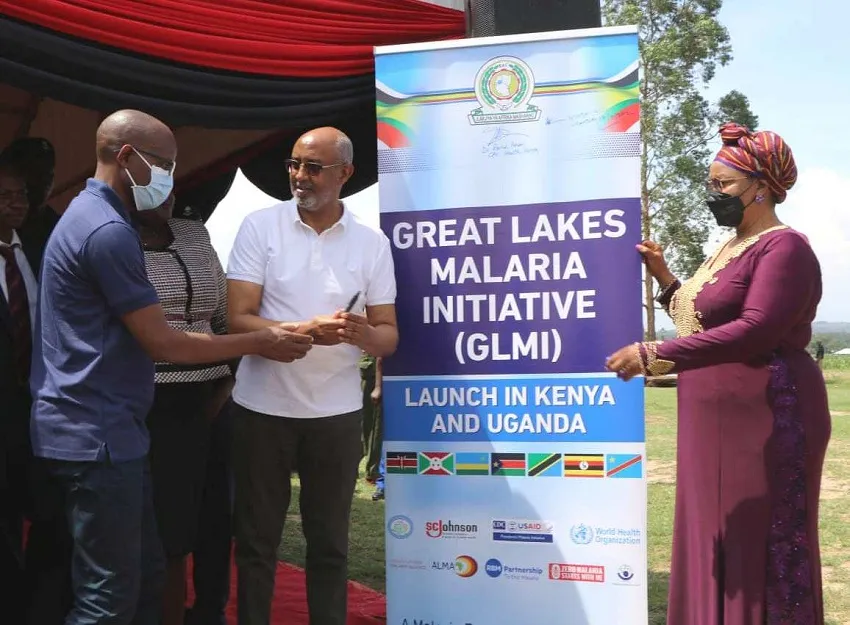Towards Universal Health Coverage: Taking specialist and basic services to underserved communities
Friday, 4 August, 2017


Amref Health Africa organised a surgical and mobile outreach mission this week to Turkana County in Northern Kenya. The mission was funded by Amref’s office in the USA and organised in partnership with the UN Refugee Agency UNHCR, and the County Government of Turkana.
Throughout the week, three visiting specialists – a general surgeon, an obstetrician gynaecologist and a sonographer – attended to scores of patients, mainly residents of the vast Kakuma Refugee camp and members of the local host community. The two were stationed at the IRC (International Rescue Committee) General Hospital within the camp, and at the Kakuma Mission Hospital.

Dr Too performs a surgery at Kakuma Mission hospital
Amref Health Africa in Kenya Country Director Dr Meshack Ndirangu and Amref USA Executive Director Robert Kelty, were in Kakuma this week to witness the outreach activities and to interact with the doctors and patients and partners. They were accompanied by Catherine Kimmel and Michelynn Woodard, co-founders of the Artemis Agency, and advocacy consultant Rachel Wilson.
Dr Anthony Wanjala, an obstetrician gynaecologist and fistula surgeon, who is based in Kakamega, Western Kenya, was on the team of visiting doctors, He saw 64 patients within the week, 11 of whom he operated on while the rest received treatment or were referred for further tests. One of the patients he operated on was Betty Akot, a 22-year-old Sudanese refugee who had lived with an obstetric fistula for three years. A fistula is an opening between the vagina and rectum or bladder that is caused by prolonged obstructed labour, leaving a woman unable to control flow of urine or faeces, or both.
“I had my son in 2013, and that is when the problem developed. I have lived with the shame of it since then. I am grateful to the doctors who have been sent here to help us,” said Betty as she recuperated on her hospital bed.
On another bed close by was 38-year-old Amina Juma, who had been scheduled for surgery to remove fibroids, but her blood count prevented that. Although she had received a couple of pints from the hospital, she needed more but it was not available. She would have to wait until the next time the surgeons came around for the operation to be done.
Deficiency of blood is a critical issue in Kakuma, said Dr Wanjala, and this is exacerbated by the remoteness of the location. But the biggest challenge is a dire shortage of staff. “The hospital has four wards and an outpatient facility, but only three nurses who work in shifts. There is one theatre nurse; if he works at night, he needs to rest during the day and vice-versa, so operations can only happen when he is available. When I operate on patients, I am worried because they need post-operative nursing care in the first 24 hours, which entails close monitoring of their vital signs. How can a single nurse do this yet she has a whole hospital to care for?”


Community members of Nasoo pose for a group photo with the Amref team and co-founders of the Artemis Agency during the free outreach
Despite the challenges, Dr Wanjala is keen to participate in the surgical outreach missions. “I have been joining the missions since 2016. There is great need out here and Amref is doing an amazing job of plugging in the gaps where the health system is dysfunctional. What we need are more visits like this so that we can give continuous care to the community. Still, we are making a huge difference in the lives of the ones we touch and I am glad to be part of it.”
Dr Ndirangu met with the UNHCR Sub-Office Head Mr Tayar Sukru and praised the partnership between the two organisations for the good of the refugee and local communities. “We need to look for more opportunities to collaborate so that we can make an even bigger difference in the lives of the people we serve.”
Kakuma Refugee camp has 182,000 residents, and receives about 2000 new entrants a month, half of whom are from South Sudan.
Also within the week, Amref and Ministry of Health staff went on a mobile outreach mission to provide primary health care services to the residents of the remote village of Nasoo, in Turkana West County. The mobile clinic struggled across flooded bridges and huge stretches of mud to reach the location, where services provided included treatment of minor ailments, nutrition services, ante-natal and post-natal care, immunisation and health education.







